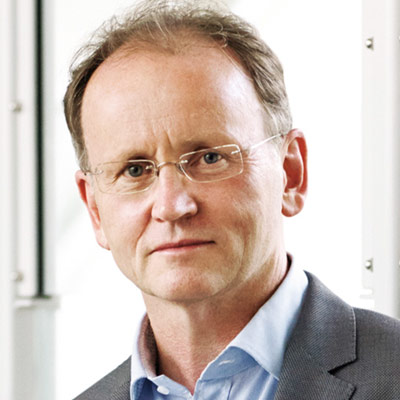当前位置:APASL-亚太肝脏研究协会年会 » 正文
[APASL视点]丙型肝炎患者的”均码”治疗
—— 作者: 时间:2016-02-21 06:43:03 阅读数:
143

21日下午,在第25届APASL年会的“专题研讨会3:HCV Treatment in Special Situation”上,来自新西兰奥克兰临床研究中心的Edward Gane教授做了关于“HCV Therapy——One Treatment for All Populations (丙型肝炎患者的”均码”治疗)”的报告。《国际肝病》前方记者从会议现场发回报道。
会上,Edward Gane教授介绍到,慢性丙型肝炎病毒(hepatitis C virus,HCV)感染是导致肝硬化及肝细胞癌的主要原因,目前世界范围内有超过1.1亿患者罹患慢性HCV感染。有效的抗病毒治疗能够降低肝脏并发症的发生风险,但是现有抗病毒治疗的低效及低耐受性限制了接受治疗的患者(<1%)。
随着100多种直接抗病毒药物(DAA)进入临床研究,新的DAA时代已经来到。最近完成的Ⅲ期临床研究显示,三药联合应用方案,包括ledipasvir/sofosbuvir、ombitasvir(ritonavir-boosted)/paritaprevir联合dasabuvir及elbasvir/grazoprevir,用于HCV-1型感染者的持续病毒学应答率(sustained viral response,SVR)>95%,其中还包含了肝硬化及既往治疗患者。
Ⅲ期研究(ASTRAL研究)证实,基因1-6型HCV感染者持续12周口服sofosbuvir(全基因型药物)联合velpatasvir(全基因型NS5A 抑制剂)能够获得95%~100%的SVR。在Ⅱ期研究(SURVEYOR研究)中,HCV-1、2、3型慢性感染者使用ABT-530(新一代NS5A抑制剂)联合ABT-493(新一代蛋白酶抑制剂),持续8~12周,SVR可达94%~100%。
目前,DAA三联方案已被用于缩短治疗时间及DAA治疗失败患者的挽救治疗。在小型的Ⅱ期研究(LEPTON研究)中,HCV-1型及HCV-3型感染的肝硬化患者使用sofosbuvir/velpatasvir联合GS-9857(全基因型蛋白酶抑制剂)治疗8周,SVR可达100%。然而,DAA治疗失败患者的SVR低,提示对于这类患者应当延长治疗持续时间。另外一项小型Ⅱ期研究(C-CREST研究)显示,HCV-1、2、3型感染者采用grazoprevir联合MK-3682(NUC NS5B抑制剂)及MK-8508(新一代NS5A抑制剂),可获得92%的SVR。。
Edward Gane教授指出:“由于所有患者均可获得高达95%的SVR,这些全基因型超短程药物预示着DAA的发展已进入最终阶段。通过紧密联系DAA治疗、公众认识和基于社区的针对性检测,未来50年内在全球范围内消灭HCV应当是可能的。”


One Treatment for all patient populations with HCV infection
Chronic hepatitis C virus (HCV) infection is the main cause of cirrhosis and hepatocellular carcinoma and it is estimated that more than 110 million people are chronically infected with HCV worldwide. Efficient antiviral treatment can reduce the risk of developing liver complications, however, poor efficacy and tolerability of current antiviral therapies have limited treatment uptake to <1%.
This afternoon, Professor Edward Gane from Auckland Clinical Studies Ltd., New Zealand will give a lecture entitled “HCV Therapy-One Treatment for all Populations”.
With more than 100 direct acting antivirals (DAAs) having entered clinical development, the era of new DAAs has come. Recently, there were three combinations, ledipasvir/ sofosbuvir, ombitasvir (ritonavir-boosted)/paritaprevir plus dasabuvir and elbasvir/grazoprevir, that completed Phase III development that could achieve sustained virological response (SVR) rates >95% in patients with HCV genotype (GT) 1 infection, including cirrhotics and treatment-experienced.
The oral pangenotypic regimen, sofosbuvir plus pangenotypic NS5A inhibitor velpatasvir for 12 weeks was confirmed to be highly efficient with an SVR of 95-100% in GT 1-6 HCV infected patients in the Phase III ASTRAL studies. Using the next gen NS5A inhibitor ABT-530 plus next gen PI ABT-493 for 8-12 weeks in the Phase II SURVEYOR studies, an SVR of 94-100% could be achieved in patients with HCV GT 1, 2 or 3 chronic infection.
Now, DAA triplets are being developed to shorten treatment duration and salvage DAA failure patients. In the small Phase II LEPTON study, sofosbuvir/velpatasvir plus the pangenotypic protease inhibitor GS-9857 for 8 weeks could achieve an SVR of 100% in HCV GT1 and GT 3 infected patients with cirrhosis. However, the SVR rates were lower in DAA failures, suggesting that the treatment duration should be prolonged for these patients. In another small Phase II C-CREST study, 8 weeks of grazoprevir plus NUC NS5B inhibitor MK-3682 plus the next gen NS5A inhibitor MK-8508 could achieve an SVR of 92% in patients with HCV GT 1, 2 or 3 infection.
These pangenotypic and ultrashort regimens represent the final phase of DAA development, with SVR rates above 95% across all patient populations. Combined with DAA access programs, public awareness and community-based targeted testing campaigns, global eradication of HCV should be feasible within the next 50 years.
Symposium 3; HCV Treatment in Special Situation - "HCV Therapy-One Treatment for All Populations"
14:55 - 15:15
Room 1ABCD
标签:
快讯
主题演讲
丙肝
发表评论
全部评论